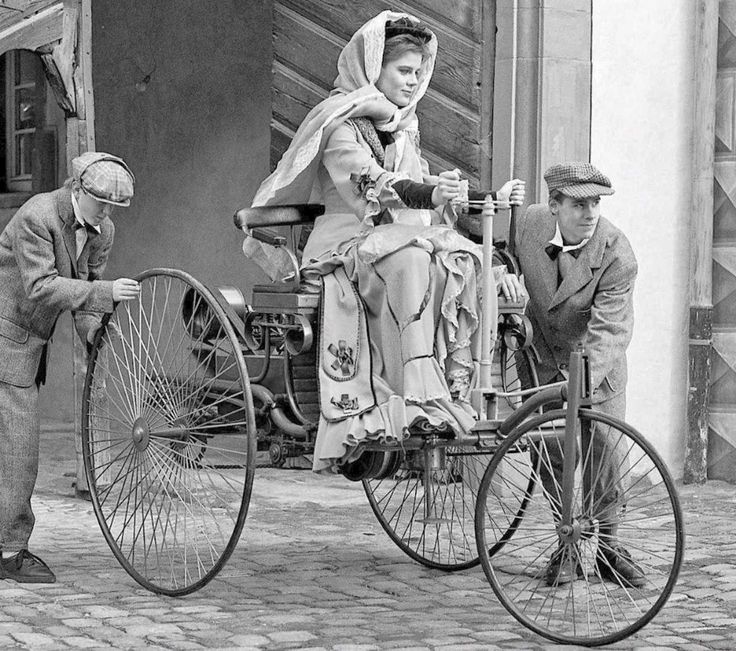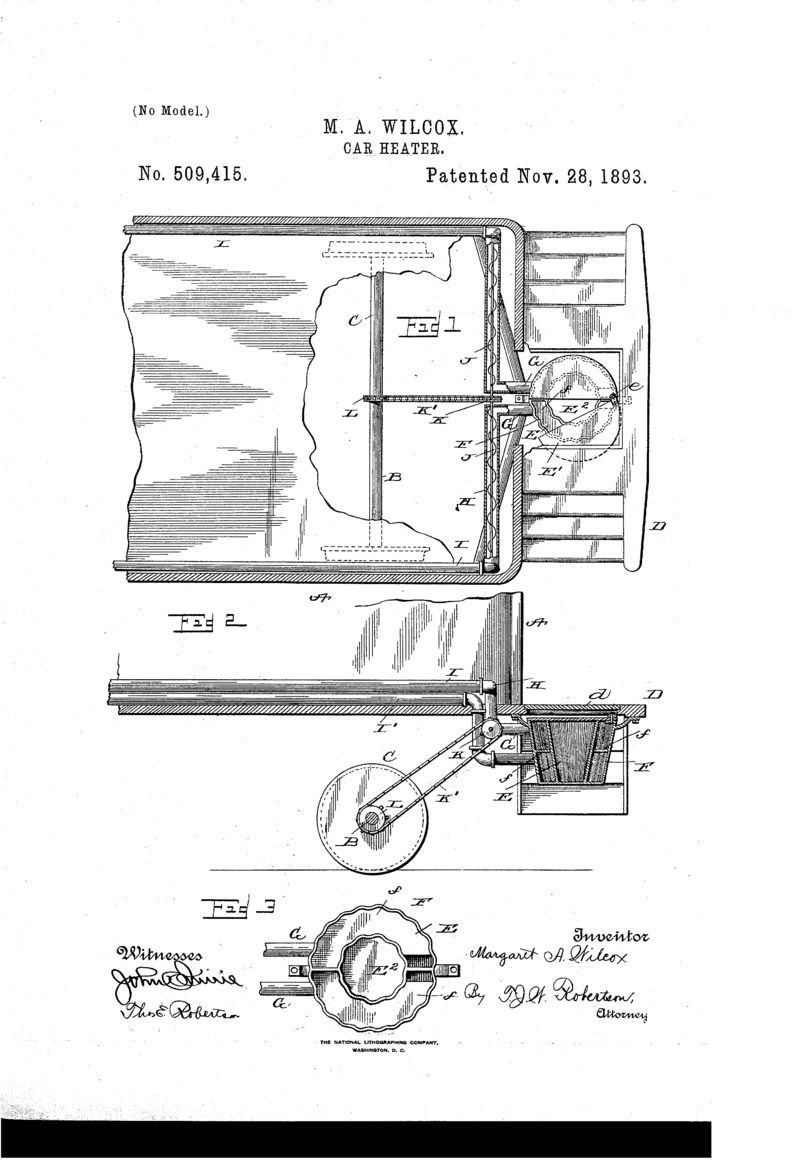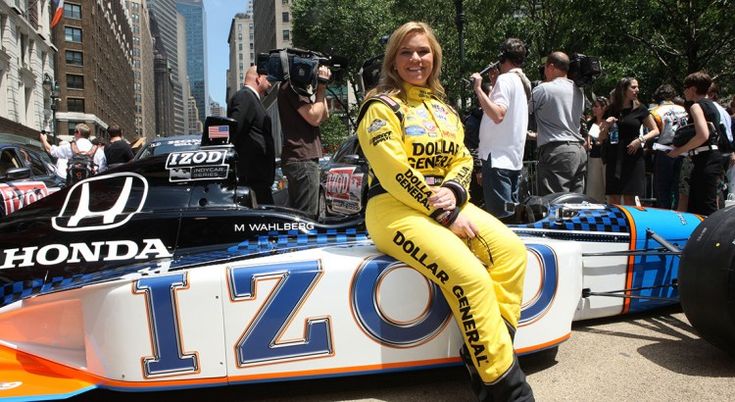Cars and driving weren’t always for everyone. For much of history, women were told they couldn’t or shouldn’t be part of the automotive world. Yet despite these barriers, women have played crucial roles in shaping automotive history. From Bertha Benz taking the first long-distance automobile journey to Mary Barra becoming CEO of General Motors, women have been driving innovation and change in the industry for generations.

The contributions of women to automotive history extend far beyond just driving cars. Women invented essential car features we still use today, like windshield wipers, and broke barriers in racing and engineering. These women pioneers navigated a male-dominated field, often facing discrimination and skepticism about their abilities.
Key Takeaways
- Women have been essential innovators in automotive technology, creating critical safety features and mechanical improvements still used in modern vehicles.
- Female trailblazers have broken barriers in motorsports, manufacturing, and corporate leadership despite facing significant gender-based obstacles.
- The automotive industry has evolved from actively discouraging female participation to recognizing women as valuable consumers, engineers, and executives.
Pioneers in Automotive Engineering

Women have made significant contributions to automotive engineering throughout history despite facing barriers to entry. Their innovations and technical expertise shaped the industry in profound ways.
Early Female Engineers and Their Contributions
Dorothée Pullinger broke ground as the first female member of The Institution of Automobile Engineers. She wasn’t just an engineer but also a successful race car driver who demonstrated women’s capabilities in the field.

She later managed Galloway Motors and advocated for women in engineering. Pullinger designed cars specifically for women drivers, understanding their unique needs in vehicle design.
Bertha Benz made history with the world’s first long-distance automobile journey in 1888. This journey proved the practicality of automobiles and provided valuable technical feedback that improved the design.

Margaret Wilcox invented the car heater in 1893, a fundamental component in vehicle comfort systems still used today.

Ford Motor Company’s Role and Women
Ford Motor Company played a pivotal role in bringing women into automotive engineering. During World War II, the company hired women to fill positions vacated by men serving in the military.
These women worked as drafters, designers, and engineers, proving their technical abilities. Many stayed in the industry after the war, though they often faced challenges in advancement.
Ford’s inclusion of women in engineering teams led to ergonomic improvements and design features that benefited all drivers. The company’s Women’s Engineering Committee, formed in the 1950s, provided a platform for female engineers to collaborate.
Today, Ford continues to promote diversity in engineering through scholarship programs and mentorship opportunities for women pursuing automotive careers.
Women in Motorsports

The world of motorsports has seen remarkable female talent break barriers, set records, and establish legacies in racing competitions worldwide. These women have overcome significant obstacles to compete at the highest levels.
Breaking Barriers in Racing
Women have been fighting for recognition in motorsports since the early 20th century. In the 1950s, pioneering women in automotive history began making significant inroads into competitive racing.
One of the most notable early pioneers was Denise McCluggage, who was both a respected journalist and successful racer. She competed in prestigious events like the Monte Carlo Rally and scored a class win at the 12 Hours of Sebring.

In drag racing, Shirley Muldowney (nicknamed “The First Lady of Drag Racing”) revolutionized the sport by becoming the first woman to receive a professional license from the National Hot Rod Association. She went on to win three NHRA Top Fuel championships.
The rally world has seen impressive female drivers like Pat Moss and Michèle Mouton, who competed successfully against men in the challenging World Rally Championship.


Iconic Female Racers
Several women have become legendary figures in motorsport history for their exceptional skill and determination. Janet Guthrie broke massive barriers by becoming the first woman to qualify and compete in both the Indianapolis 500 and Daytona 500 in the late 1970s.

Lella Lombardi stands as the only female Formula One driver to score championship points, doing so at the 1975 Spanish Grand Prix.

Danica Patrick became a household name by winning the 2008 Indy Japan 300, making her the first woman to win an IndyCar Series race. She later competed in NASCAR, inspiring a generation of young female racers.

Women in motorsports like Maria Teresa de Filippis, Lyn St. James, and Katherine Legge have all demonstrated exceptional racing talent at the highest levels.



Endurance and Prestige: Le Mans and Indy 500
The 24 Hours of Le Mans and Indianapolis 500 represent two of motorsport’s most challenging and prestigious events. Women have made remarkable progress in both competitions.
At Le Mans, Odette Siko became the first woman to compete in 1930, finishing an impressive fourth place. Later, Lella Lombardi, Desiré Wilson, and more recently, Sophia Flörsch have all tackled the legendary endurance race.




The Indianapolis 500 saw its first female competitor in Janet Guthrie (1977), followed by pioneers like Lyn St. James and Sarah Fisher. In 2009, Danica Patrick achieved the highest finish ever by a woman at the Indy 500 with third place.



Women in Motorsports North America continues supporting female participation across all racing disciplines, helping women access opportunities in driving, engineering, team management, and more areas of this competitive field.
Impact of Social Movements

Social movements transformed women’s roles in the automotive industry. These shifts came alongside broader societal changes that opened new opportunities for women in workplaces traditionally dominated by men.
World War I: Shifting the Workspace
When America entered World War I in 1917, factories faced severe labor shortages as men left for military service. This crisis created unexpected opportunities for women in automotive manufacturing. Companies like Ford and General Motors hired women for jobs previously considered “men’s work.”
Women operated heavy machinery, assembled vehicle components, and even tested finished automobiles. Their competence in these roles challenged prevailing assumptions about gender limitations in industrial settings.
The automobile also became a symbol of freedom for American women during this period, giving them unprecedented mobility. Women drivers contributed to war efforts by transporting supplies and personnel.
By war’s end, women had proven their capabilities in automotive workplaces, though many were expected to surrender their positions when men returned.
The Progression of Women in the Workplace
The 1920s built upon wartime progress as women became more visible in automotive spaces. Female drivers were increasingly common, and automobiles emerged as a dominant cultural emblem of women’s modernity and independence.
In manufacturing, women’s roles became more specialized. Some women worked as automotive designers, engineers, and even racing drivers. Notable pioneers included:
- Dorothée Pullinger: Managed a car factory producing vehicles designed for women
- Wilma Russey: First female taxi driver and mechanic in New York (1915)
- Joan Newton Cuneo: Early racing driver who competed against men
Women also contributed directly and indirectly to increasing automotive awareness through their purchasing power. As family car buying decisions increasingly involved women’s input, manufacturers began designing and marketing vehicles with female consumers in mind.
Trailblazers in the Modern Era

Women in motorsports have shattered glass ceilings and proven their exceptional driving abilities in the male-dominated racing world. Their courage and determination opened doors for future generations of female racers.
Janet Guthrie: An Indy Pioneer
Janet Guthrie made history as the first woman to qualify and compete in both the Indianapolis 500 and the Daytona 500. In 1977, she broke barriers by finishing ninth in the Indianapolis 500, proving women could compete at the highest levels of motorsport.
Before racing, Guthrie worked as a aerospace engineer, bringing analytical skills to her driving career. Her talent behind the wheel helped change perceptions about women in racing.
Despite facing skepticism and resistance, Guthrie persisted. Her best Indy 500 finish came in 1978 when she placed ninth despite racing with a broken wrist.
Her groundbreaking achievements earned her induction into the International Motorsports Hall of Fame in 2006.
Lyn St. James: Breaking Records
Lyn St. James continued the path that Guthrie blazed, becoming the second woman to race in the Indianapolis 500 in 1992. At age 45, she earned the title of Indianapolis 500 Rookie of the Year—the first woman to receive this honor.
St. James challenged stereotypes throughout her racing career, competing in the Indianapolis 500 seven times between 1992 and 2000. Her racing resume includes victories at the 24 Hours of Daytona and 12 Hours of Sebring.
Beyond her racing career, St. James founded the Women in the Winner’s Circle Foundation in 1994. This organization supports female drivers through scholarships and mentorship programs.
Her influence extends beyond the track as she continues to advocate for women in motorsports through speaking engagements and leadership roles in racing organizations.
The Evolution of Gender Roles in Automotive Industry

The automotive industry has historically reflected society’s gender expectations. In the early 1900s, women’s independence was limited and matched by the vehicles marketed to them. Electric cars were often advertised as “ladies’ cars” due to their cleaner, quieter operation.
Men dominated both car ownership and industry employment for decades. They were considered the primary drivers and decision-makers when it came to automobile purchases. Women were typically portrayed in advertisements as passengers or as concerned with a vehicle’s appearance rather than its mechanical features.
World War II marked a significant shift. As men left for war, the number of women in auto manufacturing increased dramatically from 28,300 in October 1941 to 203,300 by November 1943. By 1945, women made up 28% of the United Auto Workers union.
After the war, many women were pushed out of their factory roles. However, they had proven their capabilities in what was previously considered “men’s work.”
Throughout automotive history, female pioneers made key contributions despite facing significant barriers. These trailblazers invented crucial technologies and established important precedents for future generations.
Today, women hold positions at all levels of the automotive industry, from assembly line workers to engineers and executives. The gender balance has improved, but disparities persist in leadership and technical roles.
Modern marketing has evolved too. Automobile advertisements now typically target consumers of all genders, focusing on features relevant to diverse lifestyles and needs.
Contemporary Challenges and Opportunities

Women influence 85% of car buying decisions and represent 62% of car buyers in the US. Despite this purchasing power, women remain underrepresented in automotive leadership and technical roles.
The industry continues to face challenges in recruiting and retaining female talent. Women who enter the automotive sector often encounter hostile work environments, including harassment and discrimination.
Key Challenges:
- Gender bias in hiring and promotion
- Pay inequality
- Limited representation in technical and leadership positions
- Work-life balance concerns
- Persistent stereotypes about women’s technical abilities
However, many companies are now implementing initiatives to increase diversity. Mentorship programs, women’s employee resource groups, and targeted recruitment efforts aim to create more inclusive environments.
The shift toward electric vehicles and autonomous technology presents new opportunities. These emerging fields have fewer entrenched gender stereotypes, potentially offering more accessible entry points for women in the industry.
Digital marketing and online sales strategies also create new roles where women can leverage their consumer insights. As the industry recognizes that diverse teams drive innovation, more doors open for female professionals.
Organizations like Women in Automotive and Female Leaders in Motor Sport actively work to highlight women’s contributions and create networks for professional development. These efforts help challenge the historical perception of automotive as a male-dominated field.
Educational and Career Pathways for Women in Automotive

Women today have more opportunities than ever to enter the automotive industry through various educational pathways. Traditional four-year engineering degrees offer specialized tracks in automotive design, mechanical engineering, and electrical systems. Community colleges also provide technical certificates and associate degrees in automotive technology.
Many car manufacturers now offer apprenticeship programs specifically designed to recruit women. These hands-on training opportunities help bridge the gap between education and employment, providing practical skills alongside professional mentorship.
Professional organizations like Women in Automotive and Automotive Women’s Alliance Foundation provide networking opportunities, scholarships, and career guidance. These groups have been instrumental in supporting women entering the industry.
Career paths in automotive extend far beyond traditional mechanics roles. Women are finding success as:
- Automotive engineers
- Supply chain managers
- Marketing specialists
- Designers
- Executives and leadership
- Research and development
The digital transformation of vehicles has created new possibilities in software development and user experience design. These emerging fields often have fewer established gender biases, creating fresh entry points for women.
Despite progress, challenges remain. Women represent only about 25% of the automotive workforce. However, industry leaders are implementing mentorship programs and inclusive hiring practices to improve these numbers.
The future looks promising as more companies recognize that diverse perspectives drive innovation in automotive design, manufacturing, and marketing.
The Future of Female Inclusion in Automotive Fields

The automotive industry is gradually evolving to become more inclusive for women. Currently, women make up only about a quarter of the automotive manufacturing workforce, despite representing approximately half of the general labor force.
Organizations like the Women Automotive Network, with over 25,000 members, are actively working to support and empower women in the industry. These communities provide networking, mentorship, and professional development opportunities.
Education initiatives targeting young girls in STEM subjects will be crucial for future representation. Introducing automotive careers early can help break down stereotypes that have historically limited female participation.
Many automakers are implementing diversity hiring goals and creating women-focused leadership programs. These structured approaches aim to address persistent gaps in representation, especially at senior levels.
Key Areas for Growth:
- Engineering and technical roles
- Executive leadership positions
- Dealership ownership and management
- Automotive design and product development
The Women’s World Car of the Year organization highlights how women’s perspectives are increasingly valued in product development and marketing decisions. Their input helps create vehicles that better serve all customers.
Flexible work policies and family-friendly benefits will play a significant role in retention. Companies recognizing the importance of work-life balance will likely attract and keep more female talent.
As the industry shifts toward electric vehicles and autonomous technology, new opportunities are emerging that may help reset traditional gender imbalances in automotive careers.
Frequently Asked Questions

Women have played crucial roles in automotive history, from inventing essential car parts to breaking barriers as engineers and racers. Their contributions span from the earliest days of automobiles to modern industry leadership.
Who were the pioneering women in the early automotive industry?
Bertha Benz made history by taking the world’s first road trip in 1888, proving the viability of her husband’s invention over a 65-mile journey. This bold action demonstrated the automobile’s practical use and reliability.
Mary Anderson invented the windshield wiper in 1903 after observing a driver struggling to see through sleet. Her invention became standard equipment on all American cars by 1916.
Florence Lawrence, a silent film star, developed the first turn signal system in 1914. She created a mechanical arm that rose or lowered to indicate turning direction.
What impact did female car mechanics have in the development of automotive technology?
Female mechanics brought unique perspectives to solving automotive problems. During World War II, women entered repair shops in unprecedented numbers, keeping civilian and military vehicles operational.
Alice Ramsey became the first woman to drive across America in 1909, performing all necessary repairs herself during the 3,800-mile journey. Her mechanical knowledge helped advance understanding of vehicle durability and maintenance needs.
Women mechanics often developed practical innovations focused on reliability and safety, reflecting their practical approach to automotive technology.
How has the representation of women in the automotive engineering field evolved over time?
Women in automotive engineering have seen slow but steady progress. In 1999, only 1.4% of workers in automotive repair and maintenance were women, which grew to nearly 10% by recent years.
The Society of Women Engineers, founded in 1950, has been instrumental in supporting female automotive engineers through scholarships, networking, and professional development.
Engineering schools have increasingly focused on recruiting women to automotive programs, helping to create a more diverse pipeline of talent for the industry.
What significant contributions have women made to automotive design and innovation?
Margaret Wilcox patented the first car heater in 1893, a system that directed warm air from the engine into the cabin. This innovation dramatically improved winter driving comfort.
Hedy Lamarr, better known as a film star, co-invented a frequency-hopping technology in 1942 that later became foundational for Bluetooth, GPS, and Wi-Fi systems in modern vehicles.
Mimi Vandermolen led Ford’s design team in the 1980s, creating ergonomic innovations that considered women’s needs. Her work on the 1993 Ford Probe included easier-to-turn keys and lighter-touch controls.
In what ways did the automobile influence women’s roles and freedoms in society historically?
The automobile gave women unprecedented mobility and independence in the early 20th century. Women prioritized safety, reliability, and economy when selecting vehicles.
Cars enabled women to travel independently to work, expanding their employment opportunities beyond local neighborhoods. This mobility directly contributed to women’s economic independence.
The “motorist movement” of the 1910s and 1920s challenged gender norms, as women driving alone represented a radical departure from Victorian-era restrictions on female movement.
How have female professionals shaped the automotive industry’s workforce throughout history?
Women have served as key pioneers in automotive leadership roles, establishing new career paths. Helene Rother became the first female automotive designer when she joined General Motors in 1943.
During World War II, women comprised a significant portion of the automotive manufacturing workforce, demonstrating their capabilities in previously male-dominated roles.
Female automotive journalists like Denise McCluggage helped reshape how cars were marketed and reviewed, bringing attention to practical features beyond horsepower and speed.



